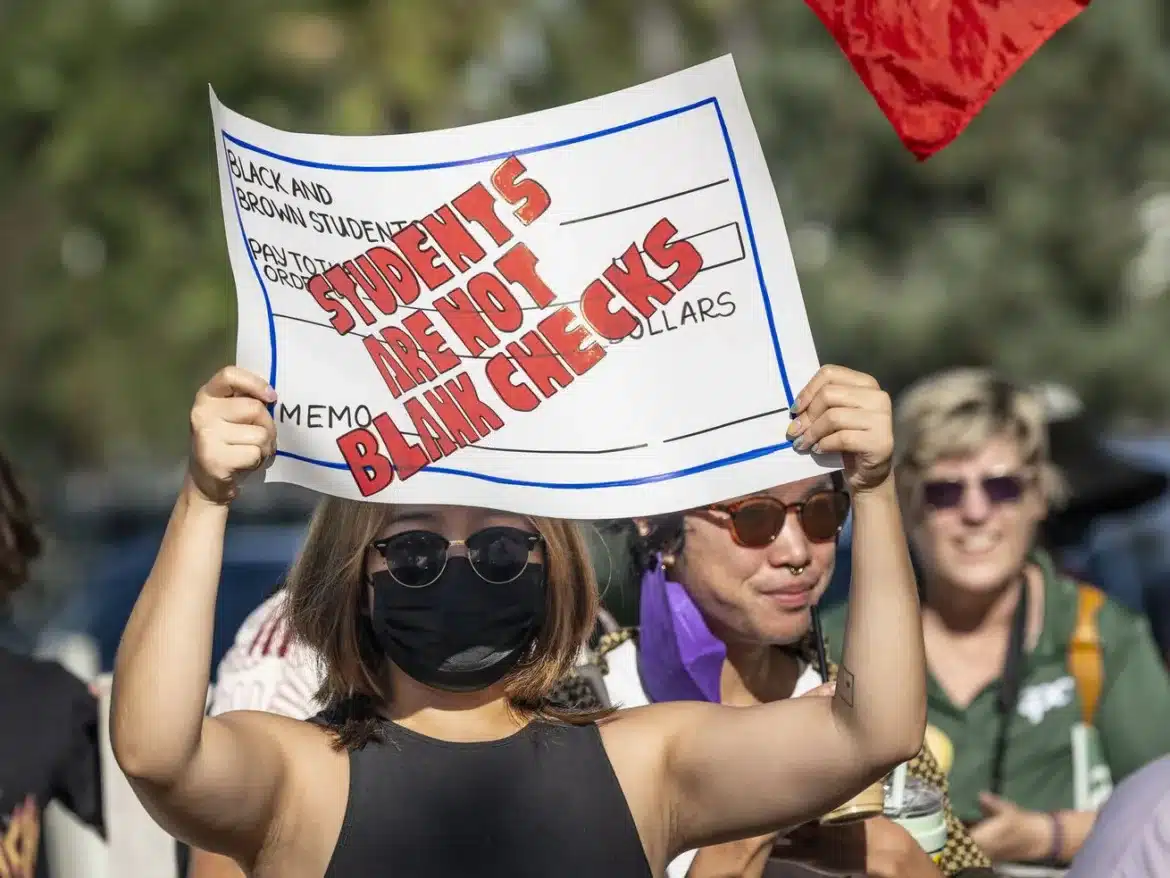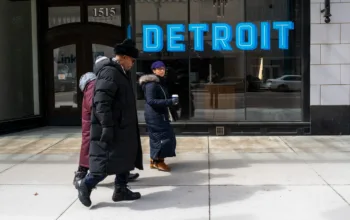Minnesota found a way to make college a good deal.
Jorge Vargas’s family has always wanted him to be the first to go to college. They left St. Paul, Minnesota, for their home country of Honduras last year, but Jorge stayed behind with an aunt to pursue higher education.
But recently, the 18-year-old senior at St. Paul’s Washington Technology Magnet School has been considering another option: the military.
“Just because it would be a decent paying job straight out of high school, that’s the only thing I like about it,” Jorge told me in a recent interview for the Today, Explained podcast. “I’ve never been much of a patriot.”
Lots of young people are looking for college alternatives these days.
A recent Gallup poll found that just 36 percent of Americans had confidence in higher education, down from 57 percent in 2015.
The reasons for that shift are complicated but according to Inside Higher Ed reporter Liam Knox, it’s largely been driven by exactly what’s on Jorge’s mind — higher education’s ever-increasing price tag.
“There’s a lot of hay made about college’s political perception problem … The things that dominate not just right-wing media, but mainstream media and liberal media as well, [like] campus culture wars,” Knox told Today, Explained. “But when most Americans say they don’t feel confident in the value of college, they’re not talking about those issues. They’re talking about money.”
Undergraduate enrollment nationwide has fallen by about 15 percent since 2010, though much of that decline has been driven by demographics: 2010 was the peak of when millennials, America’s largest living generation, went off to college.
But for Jorge — and Americans like him who share his concerns — one state has taken steps to make a college degree a little more attractive.
How Minnesota put its money where its mouth is
Up until last year, enrollment trends at Minnesota state universities pretty much mirrored national ones. Enrollment there peaked in 2011, then started gradually falling.
“That rather steady decline then hit Covid,” said Minnesota State Chancellor Scott Olson, “and institutions like ours were impacted pretty strongly by that.”
Between 2018 and 2022, the number of undergraduates enrolled at Minnesota State four-year institutions fell by nearly 10,000 — 20 percent of their total undergraduate enrollment.
The community colleges also lost 20 percent of their undergraduate enrollment, totaling more than 20,000 students.
(The University of Minnesota, which is more selective, is operated independently; undergraduate enrollment there stayed steady until around 2020, then began declining as well.)
But then something unexpected happened: in November 2022, Minnesota Democrats flipped the state’s Senate and retained control of the House and the governorship, giving them a legislative “trifecta” for the first time in a decade.
The Democrats’ majorities were thin, but the Minnesotans managed to avoid the bickering that bogged down Joe Biden and the national Democrats during that time. Instead they went on a progressive speedrun, passing legislation that enshrined abortion rights, legalized cannabis, and mandated paid sick time.
They also utilized the state’s budget surplus to pump a historic amount of money into higher education. It will pay for tuition freezes at many of the state’s public colleges and universities, and the North Star Promise Scholarship program, which pays tuition and fees for every Minnesota resident whose household makes less than $80,000 a year to go to an in-state public college or university after all other scholarships and grants are applied.
“We have a crying need in Minnesota, and I think across the United States, for workers in all sorts of jobs, whether it’s nursing, doctors, teachers, we need skilled employees,” state Rep. Gene Pelowski Jr., who chairs the Minnesota House’s Higher Education Finance and Policy Committee, told Today, Explained. “So how do we turn this declining enrollment around? How do we invest in a way where we’re going to get skilled workers?”
North Star Promise won’t start paying out until this fall, but state leaders believe it’s already having an impact. Enrollment is up slightly across the Minnesota state system this year. And applications are up nearly 20 percent for next fall. Olson said those schools are leaning into the cost cuts in their marketing.
“You will see lots of billboards and social media with perhaps the mascot of a particular school with icicles coming off their nose or beak and the words ‘tuition freeze’ being tied-in,” Olson said. “And that undoubtedly has an effect on those applications that we’ve seen go up.”
Colin Peters, a college coordinator with the Career Pathway Center at Washington Technology High School, said many of the students he works with who are eligible for North Star Promise are also eligible for other scholarships, but the simplicity of the new program makes the whole process a lot less intimidating.
“Instead of walking through the nuance[s] of Pell Grant, state grant, institutional aid, I can say if your family makes under $80,000, public institutions of higher learning in Minnesota will be covered fully. So that is just an easy access point.”
Minnesota’s moves are making waves with its neighbors, too. North Dakota recently announced its own version of the North Star Promise program, while South Dakota is lowering tuition for Minnesota residents.
“Any time that we can tick off one of our adjacent states and have them forced to do a program we’re doing, I think we’re having great success,” Pelowski said.
Jorge’s dilemma
Jorge Vargas’s financial aid offers are finally starting to roll in. And he got good news: If he chooses to study in-state, his tuition will be covered 100 percent through the North Star Promise program. No need to join the military.
But he’s still having trouble making a decision. His heart is set on college at Loyola Marymount University, in sunny Los Angeles.
“My parents want me to stay in the state. They’re like, ‘why would you put yourself in thousands of dollars in debt?’ But I really want to get out, so I don’t know.” Jorge said.
“I wish the North Star Promise covered the whole country … particularly LA.”



